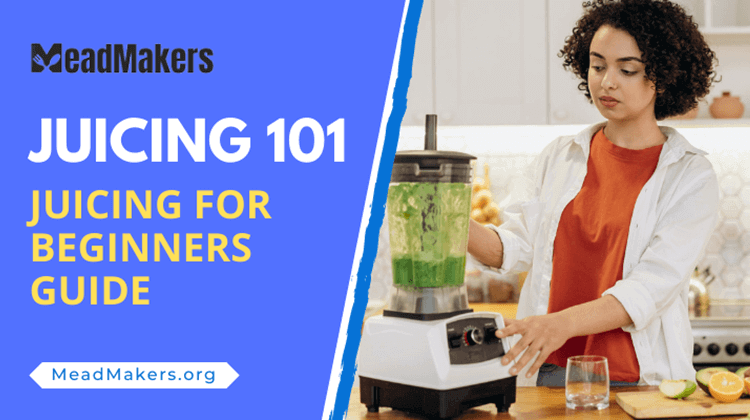Juicing for Diabetes: Is It Safe? Let’s Find Out
You may wonder if Juicing for Diabetes is safe. This article will respond to this question. Let’s explore.
What is diabetes, exactly?
There are two types of diabetes: Diabetes Mellitus and Diabetes Insipidus. We’ll focus on the first because the latter does not contain insulin deficiency.
Diabetes mellitus is divided into two types:
Type 1 Diabetes
Diabetes Mellitus is Type 1 Insulin-dependent diabetes or juvenile diabetes, which is another name for type 1 diabetes. The condition is characterized by the autoimmune destruction of insulin-producing cells and usually begins in childhood or adolescence.
This type of diabetes is permanent, requiring lifetime insulin injections to maintain blood glucose levels. Type 1 diabetes affects less than ten percent of people with diabetes.
Type 2 Diabetes
Diabetes Mellitus Type 2 is also known as adult-onset diabetes or non-insulin-dependent diabetes. Type 2 diabetes affects almost 95% of the population.
This translates to roughly 20 million people in the United States alone. If you have type 2 diabetes, your body either does not produce enough insulin or does not digest it effectively (also known as insulin resistance).
Your pancreas generates additional insulin to compensate for how your body uses it when you acquire type 2 diabetes.
Over time, your pancreas stops producing enough insulin to keep your blood sugar levels stable. When glucose (sugar or carbs from meals) is not turned into energy, it builds up in the bloodstream, leading to an increase in blood sugar.
It may be hazardous if your blood glucose levels do not stay within normal ranges.
Risk Factors
Factors that contribute to type 2 diabetes include:
- Poor diet,
- Family history of diabetes
- Lack of exercise
- Obesity or overweight
- Hypertension (high blood pressure)
- Age
- Prediabetes
- Ethnicity
- History of gestational diabetes
- Polycystic ovarian syndrome
Symptoms and Warning Signs
You may get type 2 diabetes without realizing it because the symptoms are mild. If you experience any of the symptoms listed below, you should see your doctor right away.
- Extreme fatigue
- Blurred vision
- Increased thirst and/or hunger
- Increased urination
- Lacerations or bruises that are slow to heal
- Weight loss that is unexplained
- Numbness, tingling, or discomfort in the hands or feet
Managing Diabetes
Type 2 diabetes develops as a result of a poor diet and obesity. Your doctor may recommend medication to help you manage your disease based on your symptoms.
However, you can take additional steps to help control the disease.
- Begin an exercise program to lose weight and reduce your body fat percentage.
- Drink plenty of water to keep your body hydrated.
- To boost your nutrition, consume more raw vegetables, fruits, lean meats, and healthy grains.
- Make a weekly meal plan, so you’re not tempted to eat something unhealthy.
- Keep track of your carbohydrate intake on a daily basis.
- Take steps to lower your stress levels. Your blood glucose levels rise when you’re stressed, which boosts your blood pressure and puts you at risk for heart disease.
- Check your blood sugar levels at least once a day.
- Remember to take your prescribed medications.
- Learn as much as you can about type 2 diabetes because everyone’s circumstance is unique. Knowledge is a potent weapon.
Is Juicing Safe for Diabetics?
Juice fasting and juice feasting are two methods for getting the most out of juicing.
Juice fasting, also known as juice detox or juice cleaning, entails substituting a glass of juice for each meal for one, two, three, or even seven days.
This is a strategy that diabetics should avoid at all costs. It can cause hyperglycemia or hypoglycemia depending on the situation.
Skipping meals in favor of freshly squeezed juices causes hypoglycemia. Your blood sugar will quickly rise if you drink your juice without first checking the sugar content.
Maintaining your glucose level should be a primary priority in any scenario. The good news is that you can keep juicing if you juice feast.
Juice feasting is simply including a glass of freshly squeezed juice into your daily meals or as a snack.
This is totally acceptable if you have diabetes mellitus type 1 or type 2 as long as you follow these rules.
- Always figure out how much sugar is in your juice recipe.
- If you’re juicing during a meal, deduct the sugar content of the juice from your meal.
- When choosing green juices, keep in mind that you can still add a small amount of fruit for flavor, and always remember tip #1.
Follow the rules provided above to control diabetes.
The misconception that juicing is bad for diabetics is mostly dispelled when it comes to juice eating. If you know what to juice and what to avoid, juicing is absolutely safe and nutritious.
When one thinks about juice, the first thing that comes to mind is fruit juice. Large volumes of fruit juice, on the other hand, are not advised for anyone, let alone people with health issues.
Fruits contain more sugar and have a higher glycemic index (GI), which can cause a spike in blood sugar if ingested in big amounts all at once.
As a result, leafy greens and vegetables are recommended for juicing. Due to the low carbohydrate content of vegetables, fresh green juice is advantageous to a wide spectrum of people, particularly those with type 2 diabetes.
Vegetables have a lower GI and, as a result, do not significantly raise blood sugar levels.
A list of low-carbohydrate fruits and vegetables follows. These are wonderful ingredients for diabetic-friendly drinks.
This collection of foods, according to research, has insulin-like qualities that aid in blood sugar stabilization.
- Green Apple
- Asparagus
- Blueberry
- Broccoli
- Carrots
- Cranberry
- Red Onion
- Red Pepper
- Raspberry
- Cantaloupe
- Kale
- Garlic
- Spinach
- Tomato
- Fennel
- Cilantro
When juicing for diabetics, keep in mind that the process removes a lot more fiber than if you ate it whole. Another reason to choose low-sugar fruits and vegetables is that fiber slows the absorption of minerals and sugars.
Apples, oranges, and pineapples are among the fruits with the highest sugar content. These are best consumed whole or blended into a smoothie.
Smoothies are a great way to get all of your fiber in one sitting. The fiber in the smoothie helps your body absorb the smoothie’s ingredients more slowly.
A little slice of fruit has 15 grams of carbohydrates. If you plan on juice fruit, be cautious and keep track of your carbohydrate intake.
You can reduce weight while increasing your vitamin and antioxidant juice by juicing mostly greens and vegetables, which will help your body better handle your diabetes.
It will help you feel better, and in some circumstances, diet and exercise can even help you reverse diabetes.
In today’s fast-paced world, maintaining a balanced diet can be difficult. For diabetics, eating foods that have a large impact on blood glucose levels over time might have catastrophic repercussions; therefore, maintaining a balanced diet is even more important.
Among them are blindness, renal failure, cardiovascular disease, and lower-limb amputation.
While type 2 diabetes has a hereditary component, the best strategy to avoid it is to exercise regularly and eat a well-balanced diet.
Getting some exercise does not have to be a chore. Make it fun for yourself! Swimming, dancing, or hiking are all fun things to do. Juicing allows people to easily include essential vitamins, enzymes, and antioxidants into their diet.
It doesn’t take much, and doing these steps will lower your chance of having diabetes dramatically. Before making any dietary changes, talk to your doctor, especially if you’re on medication for your ailment. Some meals can affect the effectiveness of a drug.
It may feel like the end of the world when you hear the news from your doctor, but it isn’t! You can continue to eat as well as juicing.
The most important thing to remember if you have diabetes is to learn to balance your diet with a variety of healthy meals in order to stay within your blood sugar target.
If it feels overwhelming, don’t suffer in quiet. Consider seeking help and becoming a member of a local support group.
Recommended Posts:
Juicing During Pregnancy: The Most Comprehensive Guide
Juicing for Kids: Tips, Guidelines, and Recipes
Is Your Juicer BPA-Free? How Does It Matter? Let’s Explore






